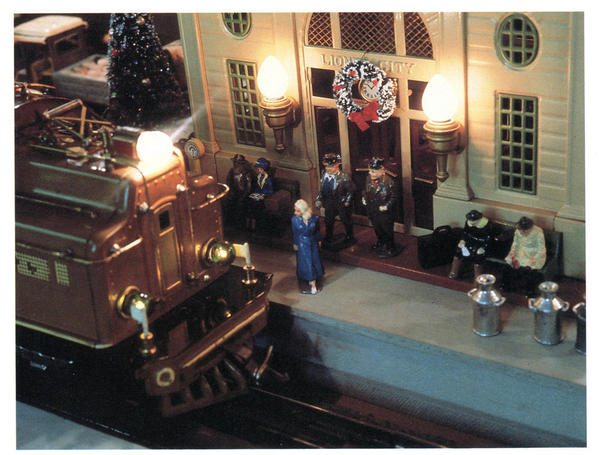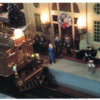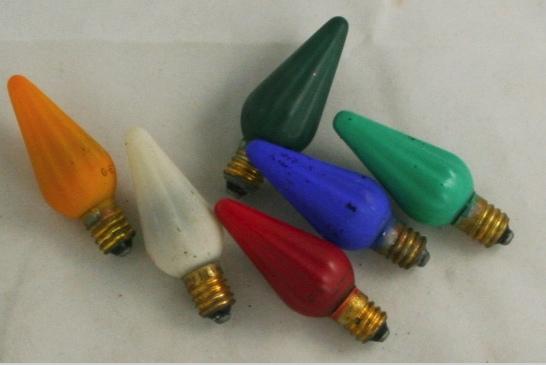Adriatic, thank you for posting the link, one post especially, maybe the one you were refering to, was quite good; I hope it's okay that I'm copying it below for everyone to read.
However, nothing in that thread or elsewhere explains this daft idea of one red and one green on the front and one red and one green on the rear. The only remotely prototypical precedent is nautical, vessel underway shows bow lights, green to starboard and red to port, and single white light atop mast for sailing vessels or single white light at stern for power vessels.
Lionel perversely inverts the red and green front lights, putting the red on the right (starboard). It's just goofy, which is the fun of tinplate. There's no justification in the world for it, it's just a fun idea for a lot of colored lights.
(post from adriatic's link follows. good information here, but note: only white or green, never both on the same train, and never green and red together, and never red on the front in any case
"As we pass farther in years from the classic method of train operation, where trains were superior to other trains by right, class or direction, we tend to lose sight of the finer points of terminology which were a matter of life or death to railroaders of forty or more years ago.
"Classification lamps (and flags) were displayed at the front of a train, or on the smokebox front of the lead (or only) steam locomotive regardless of the way the locomotive faced. White flags (and lamps by night) indicated an extra train, and green flags (and lamps by night) indicated that the train was carrying signals for a following section. Those were not markers - they were termed signals, and the lamps that were used in their display were classification lamps. In some cases, signals were displayed at the rear of a train, but only in the instance were the locomotive was at the rear of the train, pushing, and running in reverse. Any train displaying signals, either as an extra train or for following sections, displayed them only at one location in the train. They were only WHITE or GREEN, and NEVER BOTH on the same train.
"Markers, on the other hand, were only displayed at the rear of the train. They indicated that the entire train was present at or had passed a given point. Markers commonly, but not always, displayed red lights and/or red flags to the rear. This was vital, especially in the days before automatic air brakes, so that an opposing train would know that the train they were to meet had actually arrived in one piece, and there was not a severed rear end out there waiting for a collision. It also applied where a train was switching at a station - part of his train might be out past the station, and the opposing train had not complied fully with a meet until the markers had been seen.
"Many railroads, notably the New York Central before 1956, had several different ways of displaying markers. On the high speed tracks of a four-track line, trains running with the current of traffic displayed red to the rear and yellow to the front and sides (the marker lamps extended out from the side of the caboose or rear passenger car). Trains on the slow speed (freight) tracks added a red lantern on the rear platform. Trains running agains the current of traffic displayed yellow to the rear on the side of the high speed track. Trains in the clear on a siding displayed yellow to the front, sides and rear.
"The D&H used essentially the same scheme, but without the provision for slow speed tracks. Trains en-route to Canada displayed green on the marker lamps in place of yellow, to comply with Canadian operating rules. NYC did the same, across Ontario and into Quebec.
"It was possible, in the case of a locomotive running backward light or at the rear of a train pushing cars, to have markers and classification lamps at the same location on the train. In that case, the classification lamps were high on the smoke box front, and the markers were down on the pilot beam.
"Don't confuse markers with classification lamps. They were two entirely different things. Please help preserve the heritage by maintaining the correct terminology, even if the subject seems to be arcane."













